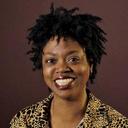Your cart is currently empty!
Reading in science? Strategies for teens and young adults with learning disabilities and ADHD.
 Reading is a complex act that integrates the visualization of graphic symbols. The key is reading in the sciences is whether a student can understand the meaning of the words in context. Older students typically read literature or fictional stories, while adults spend the majority of their reading nonfictional materials and expository writing. The goal of literacy in science is to develop in students a curiosity about the world around them. These strategies facilitate the process.
Reading is a complex act that integrates the visualization of graphic symbols. The key is reading in the sciences is whether a student can understand the meaning of the words in context. Older students typically read literature or fictional stories, while adults spend the majority of their reading nonfictional materials and expository writing. The goal of literacy in science is to develop in students a curiosity about the world around them. These strategies facilitate the process.
- Scan selections for complicated/unfamiliar words.
- Incorporate notes from strategic teaching.
- Integrate concepts with modern technology.
- Question theories and create understanding beyond literal readings.
Tags

EdieLovesMath empowers individuals with ADHD and Autism, their families, and professionals through a 4-step plan that builds confidence and success in reading, math, writing, and organization. As someone with a neurodiverse brain herself, Edie understands the challenges and triumphs of navigating learning differences firsthand. Join us. We’re here to guide your journey.
About Me ›
- Helping Neurodiverse Teens Transition to College: 5 Tips for Parents
- What is Neurodiversity? A Parent’s Perspective
- Creative Calm: Why Art Therapy Works for Teens and Young Adults with ADHD
- Getting Disability Accommodations in College: What Students and Parents Need to Know
- Neurodivergent Burnout: How to Recognize It and Tips to Recover
Leave a Reply